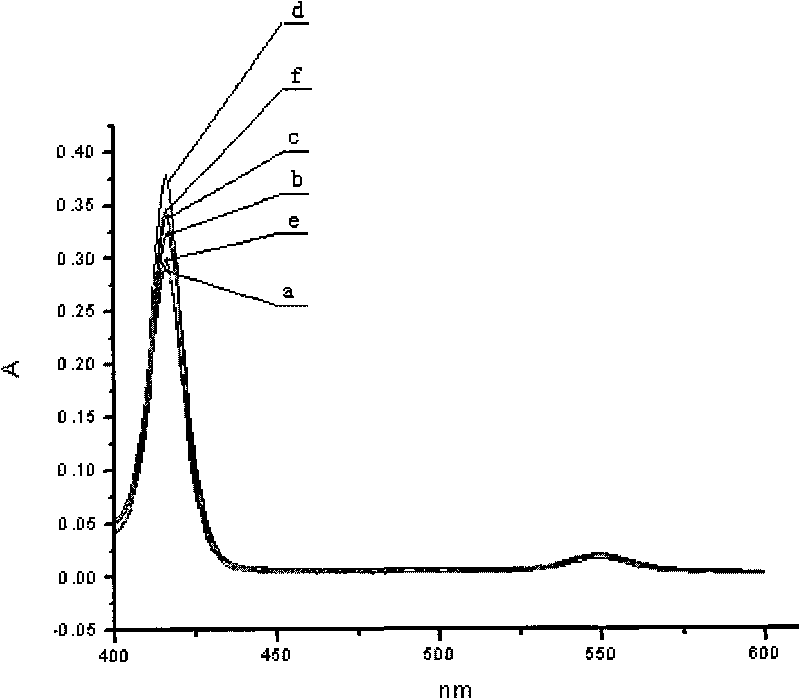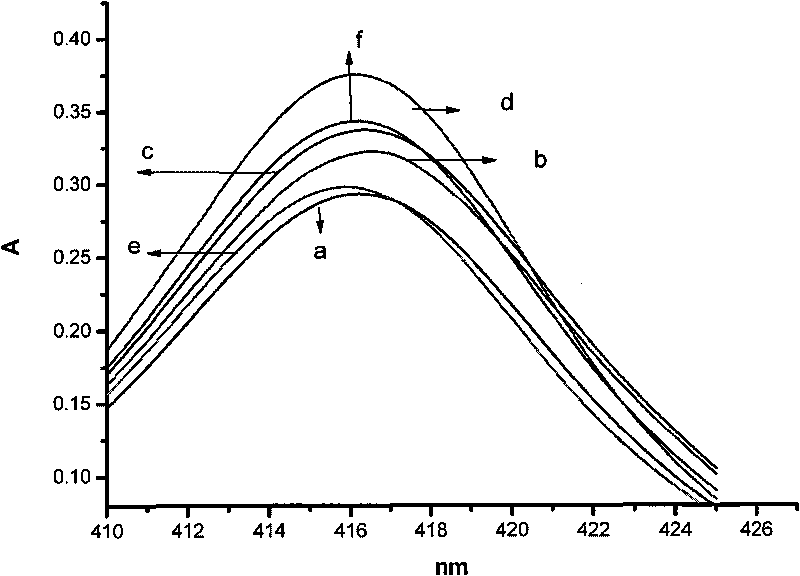Method for detecting organophosphorus pesticide residual quantity and liquid porphyrin optical detection apparatus
A technology of organophosphorus pesticides and residues, applied in the direction of color/spectral characteristic measurement, etc., can solve the problems of increasing procedures and working hours, complicated operation process, increasing production costs, etc., achieve convenient and fast detection, good repeatability, and improve work efficiency Effect
- Summary
- Abstract
- Description
- Claims
- Application Information
AI Technical Summary
Problems solved by technology
Method used
Image
Examples
Embodiment 1
[0065] 1.1) In the step, take pentafluorotetraphenyl zinc porphyrin as photosensitizer, take acetonitrile organic solvent as fixed solvent, press the amount of substance of pentafluorotetraphenyl zinc porphyrin: the volume ratio of acetonitrile organic solvent is 1: 10 6 The ratio of pentafluorotetraphenyl zinc porphyrin is added in acetonitrile, and after stirring and dissolving, the concentration of the pentafluorotetraphenyl zinc porphyrin substance prepared is 10 -6 mol / L pentafluorotetraphenylzinc porphyrin solution, placed in a refrigerator, stored in the dark at 3°C, and set aside.
[0066] 1.2) In the step, according to the volume of known organophosphorus pesticide solution: the volume ratio of fixed solvent is 1: 10 4The ratio of organophosphorus pesticide solution is configured respectively; Organophosphorus pesticide is omethoate (40% EC), dimethoate (40% EC), dichlorvos (80% EC), chlorpyrifos (40% EC), isocarbophos ( 40% emulsifiable concentrate), phorate (40% e...
Embodiment 2
[0071] 1.1) in the step, take zinc porphyrin as photosensitizer, take acetone organic solvent as fixed solvent, by the amount of substance of zinc porphyrin: the volume ratio of acetone organic solvent is 1: 10 5 The ratio of zinc porphyrin is added in the acetone organic solvent, and after stirring and dissolving, a mass concentration of 10 is prepared. -5 mol / L zinc porphyrin solution, placed in the refrigerator, protected from light at 4°C, and set aside.
[0072] 1.2) In the step, five kinds of known organophosphorus pesticide solutions (ie omethoate (40% EC), dimethoate (40% EC), dichlorvos (80% EC), chlorpyrifos (40% EC), isocarbophos The volume of (40% emulsifiable concentrate): the volume ratio of acetone is 1:10 5 The proportion of five kinds of known organophosphorus pesticide solutions were prepared respectively.
[0073] 1.3) In the step, the volume of the zinc porphyrin solution: the volume ratio of five known organophosphorus pesticide solutions prepared in the...
PUM
 Login to View More
Login to View More Abstract
Description
Claims
Application Information
 Login to View More
Login to View More - R&D
- Intellectual Property
- Life Sciences
- Materials
- Tech Scout
- Unparalleled Data Quality
- Higher Quality Content
- 60% Fewer Hallucinations
Browse by: Latest US Patents, China's latest patents, Technical Efficacy Thesaurus, Application Domain, Technology Topic, Popular Technical Reports.
© 2025 PatSnap. All rights reserved.Legal|Privacy policy|Modern Slavery Act Transparency Statement|Sitemap|About US| Contact US: help@patsnap.com



